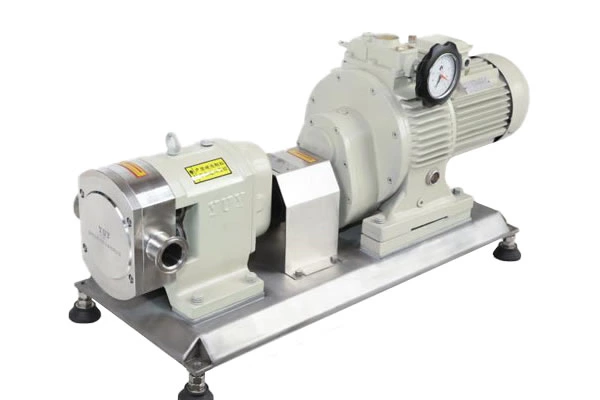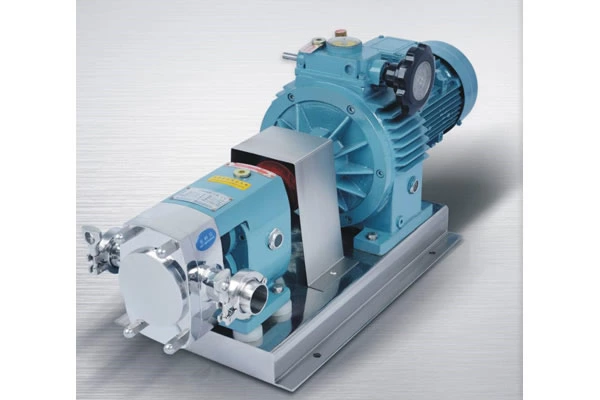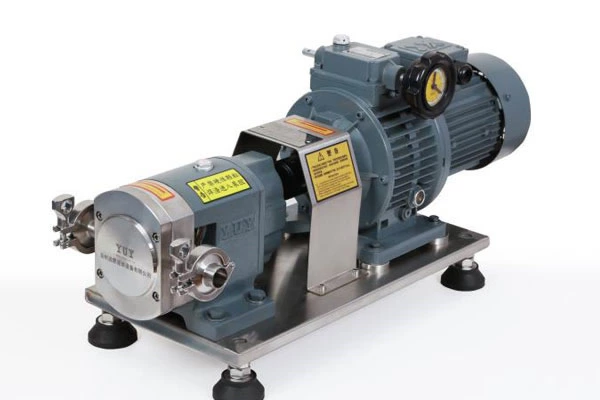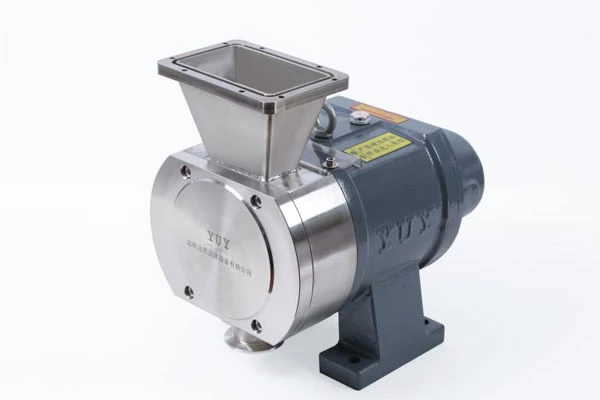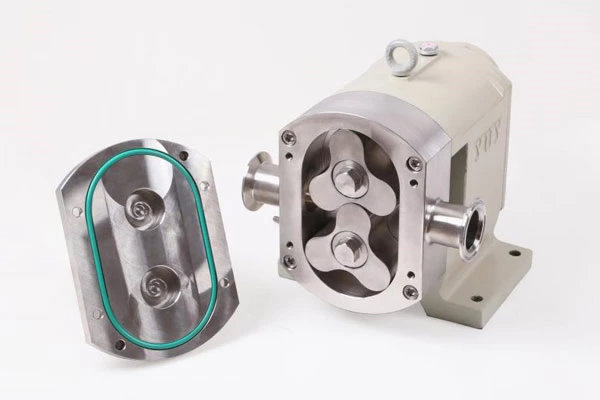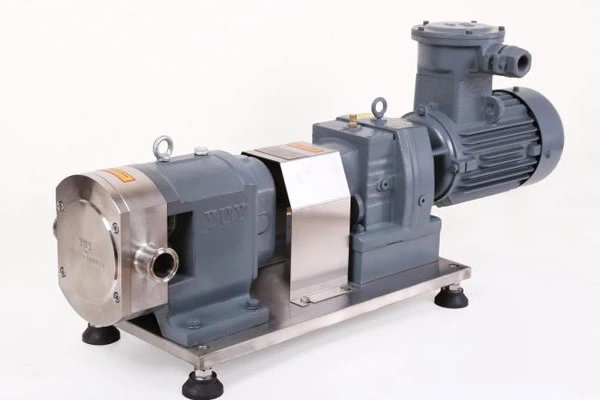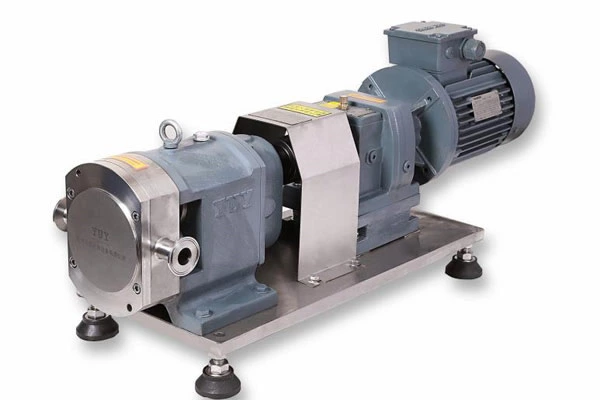Repair Of Common Problems Of Sanitary Rotary Vane Pumps
Nowadays, people have stricter requirements on the quality of Sanitary Rotary Lobe Pump pumps, and it is easy to leave some problems in the maintenance process of sanitary rotary vane pumps. If it is not well maintained, the internal parts will age, and then it will slowly lose its use value. More importantly, it will waste a lot of money to buy another one. So how should we maintain it?
First, we should often check whether there is any problem with the motor of the sanitary rotary vane pump, especially whether its gears can rotate and whether its power is as large as when it was purchased. Its inspection is not good for the naked eye, but requires certain equipment to detect.
Second, the quality of the sanitary rotary vane pump has always been affected by the motor. When the power of the motor is too low, the amount of water that can be pumped is small. When testing, it is necessary to identify the quality of the motor coil in the sanitary rotary vane pump, which is very critical to whether the sanitary rotary vane pump can work normally.
Third, the water inlet valve in the sanitary rotary vane pump must be checked. This part directly affects whether the sanitary rotary vane pump can pump water.
Teach you how to solve the failure of sanitary rotary vane pump:
1. Unable to start
First, check the power supply: whether the joint connection is reliable; whether the switch contact is tight; whether the fuse is blown; whether the three-phase power supply is missing. If there is a circuit breaker, poor contact, fuse blown, or missing phase, the cause should be found out and repaired in time. Secondly, check whether it is a mechanical failure of the sanitary rotary vane pump itself. Common reasons include: the packing is too tight or the impeller and the pump body are stuck and blocked by debris; the pump shaft, bearing, and leakage ring are rusted; the pump shaft is severely bent, etc. Troubleshooting method: loosen the packing, dredge the water diversion groove; disassemble the pump body to remove debris and rust; remove the pump shaft to correct or replace a new pump shaft.
2. Heating of sanitary rotary vane pump
Causes: bearing damage; the gap between the rolling bearing or the bracket cover is too small; the pump shaft is bent or the two shafts are not concentric; the tape is too tight; lack of oil or poor oil quality; the balance hole on the impeller is blocked, the impeller loses balance, and the thrust to one side is increased. Troubleshooting method: Replace the bearing; remove the rear cover and install a gasket between the bracket and the bearing seat; investigate the pump shaft or adjust the concentricity of the two shafts; loosen the tape tightness appropriately; add clean butter, the butter accounts for about 60% of the gap in the bearing; remove the blockage in the balance hole.
3. Insufficient flow
This is because: the power speed is not matched or the belt slips, causing the speed to be low; the axial flow pump blade installation angle is too small; the head is insufficient, the pipeline is too long or the pipeline has a right-angle bend; the suction range is high; the bottom valve, pipeline and impeller are partially blocked or the impeller is defective; the outlet pipe leaks seriously. Troubleshooting method: Restore the rated speed, remove the belt oil stains, and adjust the belt tightness; adjust the blade angle, lower the installation position of the sanitary rotary vane pump, shorten the pipeline or change the curvature of the pipeline; seal the sanitary rotary vane pump leakage, and press the packing; remove the blockage, replace the impeller; replace the leakage reduction ring, and block the leak.
4. Water cannot be sucked up
The reason is that there is air in the pump body or air is accumulated in the water inlet pipe, or the bottom valve is not closed tightly and the water is not fully filled, the vacuum pump packing is seriously leaking, and the gate valve or flap valve is not closed tightly. Troubleshooting method: First press the water up, then fill the pump body with water, and then start the machine. At the same time, check whether the check valve is tight, whether there is air leakage in the pipeline and joints. If air leakage is found, apply lubricating oil or mixed paint on the joints after disassembly, and tighten the screws. Check the oil seal ring of the sanitary rotary vane pump shaft. If it is severely worn, replace it with a new one. The pipeline is leaking water or air. The nut may not be tightened during installation. If the leakage is not serious, you can apply cement or cement slurry mixed with asphalt oil to the leaking or leaking place. Temporary repairs can be applied with some wet mud or soft soap. If there is water leakage at the joint, tighten the nut with a wrench. If the leakage is serious, it must be disassembled and replaced, and the cracked pipe must be replaced; reduce the head and press the nozzle of the sanitary rotary vane pump into the water 0.5m.
5. Severe vibration
There are mainly the following reasons: unbalanced electric rotor; poor coupling; bearing wear and bending; loose and broken parts of the rotating part; loose pipe brackets, etc. Adjustment, repair, reinforcement, straightening, replacement and other methods can be adopted respectively. The above situation is a common cause of sanitary rotary vane pump failure, but not all reasons. In practice, the principle of outside first and inside should be followed to deal with the failure due to actual analysis, and blind operation should not be performed.
6. Overheating of the matching power motor
There are four reasons. The first is the power supply: the voltage is too high or too low. Under a specific load, if the voltage fluctuation range is outside the rated value of +10% to -5%, the motor will overheat; the three-phase voltage of the power supply is asymmetric, and the phase imbalance of the three-phase voltage of the power supply exceeds 5%, which will cause the winding to overheat; phase-loss operation. Experience shows that more than 85% of agricultural motors are burned due to phase-loss operation. Phase-loss protection devices should be installed on the motor. The second is the reasons for sanitary rotary vane pumps: the power is not matched, the small horse pulls the big cart, the motor is overloaded for a long time, and the motor temperature is too high; the start is too frequent, and the motor with a short-term or intermittent duty system works continuously. The number of starts should be limited, thermal protection should be selected correctly, and the motor should be used according to the rated value marked on the motor. The third is the cause of the motor itself: the connection method is wrong, the △ shape is mistakenly connected to the Y shape, which causes the temperature of the motor to rise rapidly; the stator winding has phase-to-phase short circuit, turn-to-turn short circuit or local grounding, the motor is partially overheated in mild cases, and the insulation is burned in severe cases; the squirrel cage rotor is broken or defective, the motor runs for 1 to 2 hours, and the core temperature rises rapidly; the ventilation system fails, and the fan should be checked for damage, the direction of rotation is correct, and the ventilation duct is blocked; the bearing wear and the eccentric sweeping of the rotor cause the stator and rotor cores to rub against each other and make a metal collision sound, and the core temperature rises rapidly. In severe cases, the motor smokes and even the coil burns. The fourth is the cause of the working environment: the motor winding is damp or dust, oil, etc. are attached to the winding, resulting in reduced insulation. The insulation resistance of the motor should be measured and cleaned and dried; the ambient temperature is too high. When the ambient temperature exceeds 35°C, the high inlet temperature will cause the temperature of the motor to be too high, and efforts should be made to improve its working environment. Such as building a shed for sunshade. Note: If a fault occurs due to electrical reasons, an electrician with a professional qualification certificate should be asked to repair it. People who have only a superficial understanding should not repair it blindly to prevent personal injury accidents.
7. The deep well submersible sanitary rotary vane pump does not supply water or the water volume is small
First, let's see how much the current of the sanitary rotary vane pump is different from the current during normal operation. If it is smaller than the normal operation (basically 2\3 of the normal current), then there will be problems such as impeller wear and blockage of the check valve at the top of the pump head. If the current is the same as usual, then there are problems such as pipe gasket leakage, pipe leakage, and pump body leakage. If the current is larger than the normal operation, it can basically be determined that the problem is the wear of the wearing parts. In addition, if the cable is damaged, the water volume is the same as usual, but the current will increase. The current of the 3 380V motor is generally 2.2A. The above reasons can be found out by repair personnel who often repair deep well pumps.
